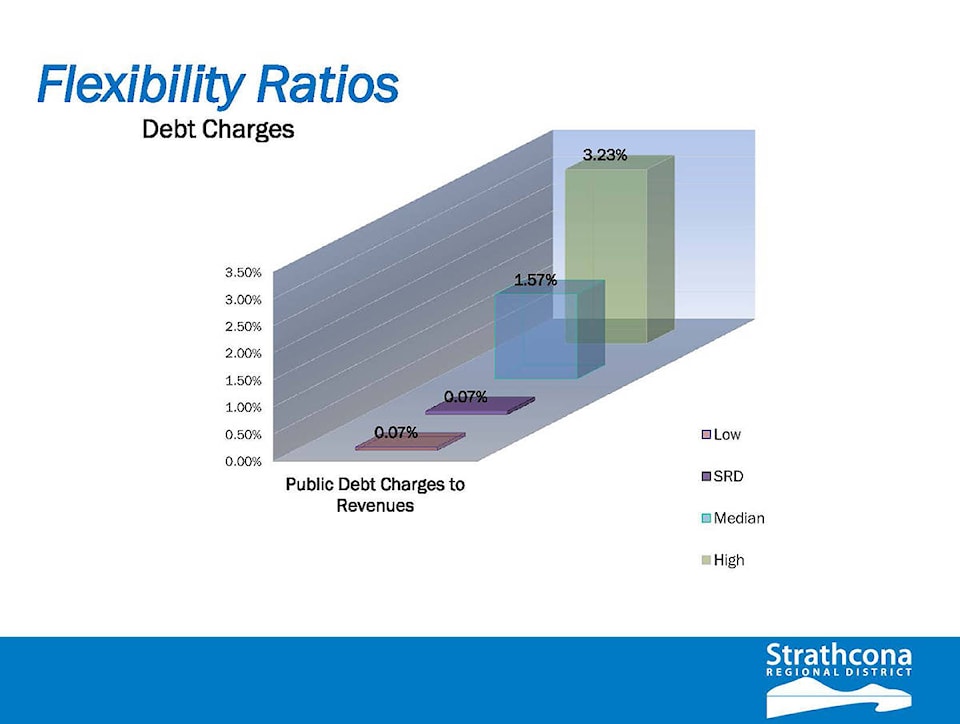The Strathcona Regional District appears to be in reasonable financial staff.
That’s the message from a recent look at finances by new SRD chief financial officer Myriah Foort, who made a presentation to the board at their meeting in August, which followed one on the financial statements in July.
In a summary of surpluses and reserves, the balance increased over the year from $12 million up to $14 million. Much of this is from increases for Strathcona Gardens, along with an increase from general administration surplus. From reserve funds, the SRD used about $675,000 for capital projects throughout the district, such as parks and trails.
As part of the process, the SRD examined its finances for their sustainability, flexibility and vulnerability. It compared its financial situation with 11 other regional districts from across this province.
“I have compared our 2017 financials to other RDs in B.C. of similar size,” she told the board. “It is a good checkpoint, to look at ourselves compared to others.”
The districts ranged in population from about 19,000 to 63,000. These included Alberni Clayoquot, Bulkley Nechako, Central Kootenay, Columbia Shuswap, Comox Valley, East Kootenay, Kitimat Stikine, Kootenay Boundary, Quathet, Squamish Lillooet and Sunshine Coast. In several key areas, the SRD has posted stronger than average results.
“We are trending higher than the median … which is good news,” Foort said.
On sustainability, it was above the median for assets to liabilities, but a little below on accumulated surplus to tax requisitions.
For flexibility, when measuring debt charges to revenues, the SRD is at the low end at 0.07 per cent, while the median for the regional districts is 1.57 per cent. The highest, though not identified, came in at 3.23 per cent. However, it was lower than the median for being able to rely on own-source revenues when compared with tax requisitions, though Foort expects this to increase eventually. One challenge though for the future, she added, will be in light of depreciating infrastructure, the need to invest in regional district assets.
When it comes to vulnerability, specifically on looking at the importance of government transfers for total revenue, the SRD came in just below the median.
“We’re not too reliant on any other government money to maintain our operations,” Foort added. “We’re not using grants to maintain services.”
The overall message from Foort’s presentation that the SRD’s fiscal health is “satisfactory” but there is room for improvement, with recommendations such as a keeping a continued focus on fiscal sustainability and service delivery over the long term and taking a closer look at asset management.
At the July meeting, the 2017 financial statement indicated the SRD’s net financial assets, once liabilities are deducted from total financial assets, stood at $12,036,308, compared with $11,615,575 for 2016. Non-financial assets also increased to $18,994,103 from $16,696,703 in 2016.
As far as revenue versus expenses, the SRD brought in $15,570,446 versus spending $12,852,313 in 2017, for a surplus of just over $2.7 million – less than projected but larger than the almost $1.9 million surplus in 2016.
More information is available on the SRFD website at srd.ca.
